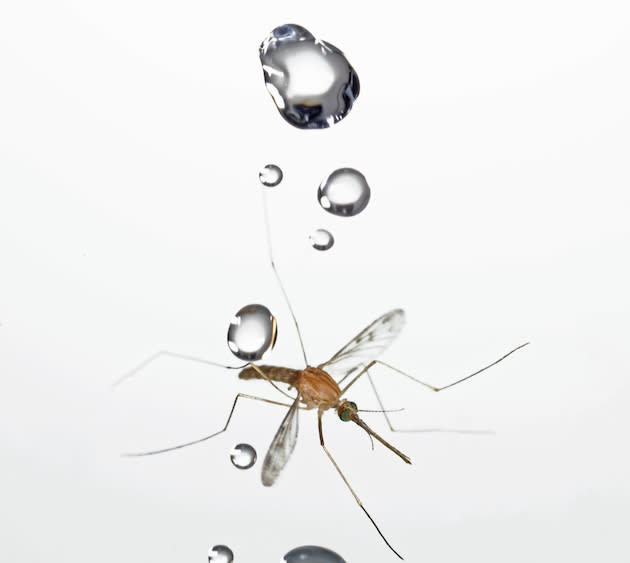 The Sideshow
The SideshowNew study on mosquitoes and raindrops could change the future of robotics

Dr. David Hu, professor of mechanical engineering and biology at Georgia Institute of Technology, says mosquitoes could provide clues to building flying robots of the future.
In a new study, Dr. Hu and his team of researchers studied how mosquitoes survive the impact of raindrops that are more than 50 times their body mass.
"This could directly impact the research for a robust flying vehicle," Hu told Yahoo News. "That's important. The dream is that these autonomous robots will be able to fly outdoors."
The answer to how the tiny insects survive such a powerful impact could have applications in both science and medicine. Hu's team used high-speed cameras to capture images of the mosquitoes and raindrops at 4,000 frames per second. The average camera records at 24 frames per second.
At first, researchers tried to determine how mosquitoes managed to avoid the countless raindrops that fall in any given storm. Instead, they discovered that the mosquitoes don't avoid the rain at all. When a drop lands on a mosquito, the insect literally rides the wave of moisture, with his powerful exoskeleton making the impact no more powerful than the equivalent of a human brushing their own arm with a feather. The water then glides off the mosquito's body, allowing it to continue its flight unencumbered.
"They're not bothered by, or even trying to escape the rain, Hu said. "They have very simple nervous systems. It's not even clear if they understand that it's raining."
In fact, the study found that the average mosquito is probably hit by a raindrop roughly every 25 seconds during a storm.
"Drops are coming down 10 times faster than mosquitoes can fly," Hu said. "At some point, nature decided there's no way we can design something that avoids these things."
However, if the mosquito is resting on a tree branch or flying close to the ground, the results can be much more deadly. That same feather-like impact could instead impact with as much force as 10,000 times the insect's body weight.
And this isn't the first study using insects to boost the future of robot technology. Hu said a recent study found that when cockroaches run along a kitchen floor and then up a wall, they are actually slamming their heads into the wall and "bouncing" up into the air, as opposed to simply climbing.
"When you want to make a small robot, you want to get used to being pummeled by the environment," he said.
Hu's team also conducted a study of ants that build "rafts" to survive flash floods, and says his team will continue to study insect flight for future scientific applications.
There could be other applications as well. Hu said the study results might also eventually be able to help places around the world where mosquitoes spread malaria after storms.
In theory, by understanding how the mosquitoes travel in such conditions, experts may someday be able to more accurately predict or even prevent mosquito swarms.
"The more we know about how changing weather conditions affect the flight of malaria vectors, eventually, we can come up with some general rules of thumb for how weather conditions would affect conditions," Hu said.
Still, Hu says that just like cockroaches, mosquitoes aren't going anywhere anytime soon.
"Mosquitoes will probably be a big nuisance for many generations to come," he said.
More popular Yahoo! News stories:
• 'The Wire: The Musical' (VIDEO)
• New Zealand's 'Miss Universe' winner may lose title over lack of citizenship
• Bride drenched in 'oily black ooze' from hotel sprinklers on wedding day

